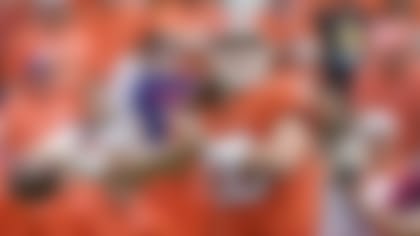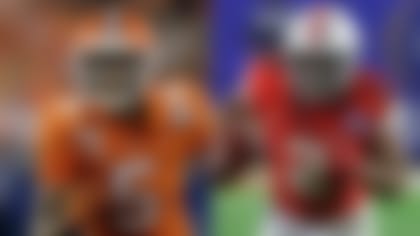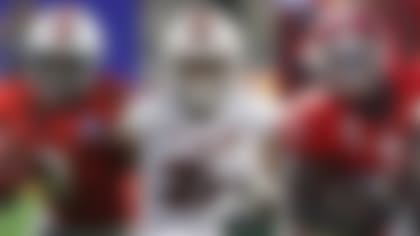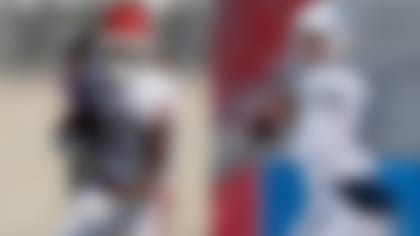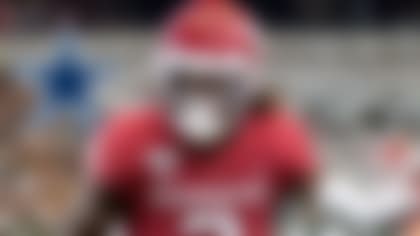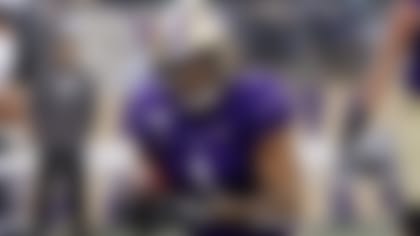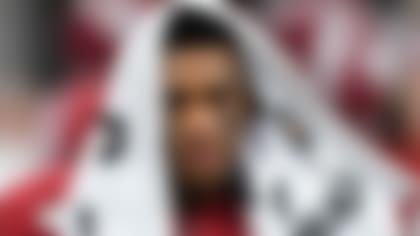With the 2020 NFL Draft just around the corner, I've put my context-based data models to work in search of identifying the best team fit for some of the top players in this year's class. Leading up to Round 1, I'll be taking my top five highest-rated wide receivers, running backs and quarterbacks and pairing them with the team with whom the *player earns the highest win share in 2020, given what we know about each team's personnel, coaches and strategy right now.*
Note: To keep this as realistic as possible, draft order was considered but free agent substitute options were not.
1) Joe Burrow + Cincinnati Bengals = +3.9 wins
One of the best indicators to measure a quarterback's performance over a season is his production when he was not under pressure. Last season Andy Dalton had the lowest passer rating (82.3) in the NFL when he wasn't under pressure, throwing 14 touchdown passes against 10 interceptions while posting a negative completion percentage above expectation, per Next Gen Stats (min. 200 attempts). To be fair, injuries within the receiving corps -- A.J. Green's season-long absence in particular -- had a substantial impact on Dalton's play. But the Bengals' opportunity to select Burrow creates the most added wins of any QB in this class. So why is the LSU passer such a great fit in Cincinnati? Well, my model doesn't rank the Bengals' O-line highly, and Burrow was outstanding under duress last season. He posted the most touchdown passes against the blitz (25) in 2019, while averaging the highest yards-per-attempt mark (11.7) and the best TD-to-INT ratio (17:1) while under pressure, per Pro Football Focus. Having a healthy Jonah Williams -- the 2019 first-round pick who missed all of last season -- should only help.
2) Tua Tagovailoa + Los Angeles Chargers = +3.8 wins
Saying the Chargers' O-line last year was a problem is an obvious understatement. But the additions of tackle Bryan Bulaga (free agency) and guard Trai Turner (trade) really help increase that unit's projected efficiency. Due in part to the pressure he was under, Philip Rivers ranked 30th in passer rating on deep passes (53.8) last season, throwing just five TD passes against nine INTs (most in the NFL), per Next Gen Stats. Tua's success in this area is one reason he projects so positively in L.A. The Alabama QB had the best deep-passing efficiency in the FBS (19.8 yards per attempt on throws of 20-plus air yards) over the last two seasons. His potential on the Chargers' roster -- when paired with Keenan Allen and Austin Ekeler, specifically -- is his highest (meaning best potential outcome) with any team that currently has a need at the position.
3) Justin Herbert + Miami Dolphins = +3.0 wins
There is a lot to be said for how a coach's training influences how they identify potential player fits. In Brian Flores' case, the tools he picked up during his time under Bill Belichick might make Herbert the ideal candidate to play QB1 in Miami. The Oregon passer's measurables (6-foot-6, 236 pounds) and clean-pocket production (52:7 TD-to-INT ratio since 2018, per PFF) fit the mold the former Patriots assistant is likely to value. While Herbert's college film does show a lot of screen passes (1,213 yards since 2018, second-most among FBS quarterbacks) and attempts behind the line of scrimmage (114 in 2019, third-most in FBS), it also shows a lot of drops by his receivers (32 last season, which was sixth most in FBS, per PFF), which means the 22-year-old wasn't able to showcase all that he's capable of. With Ryan Fitzpatrick on the roster, Herbert's ability to learn from a seasoned, successful veteran without the pressure of having to start on Day 1 projects for the most success for him and the Dolphins next season.
4) Jalen Hurts + Las Vegas Raiders = +1.9 wins
Jalen Hurts' college film showed a player possessing incredible dual-threat ability. He posted 47 rushes of 10-plus yards (second in FBS, per PFF), and my computer vision tracked his ability to complete passes while still moving (not "set") as best in the nation on passes of 10-plus and 15-plus yards. Overall, his ability to deliver a ball within 3 feet of an intended receiver in 2019 ranked third in the class, per my computer vision, and second if you factored in the 2018 season, too. It's also worth noting that Hurts led the FBS last year in yards per attempt when not under pressure (12.3), and you know how much I love that stat. The Raiders' addition of Marcus Mariota in free agency suggests to me that they are still navigating the QB position (despite the presence of seventh-year starter Derek Carr), and developing Hurts has the potential to produce a lot of upside with minimal downside.
NOTE: I don't have this pairing occurring in Round 1, and the Raiders don't have a second-round pick, so for this match to happen, Las Vegas would likely have to trade down from one of its 1s (Nos. 12 and 19).
5) Jake Fromm + New England Patriots = +1.5 wins
When it comes to prototypes, Jake Fromm has the attributes -- leadership, decision-making, poise -- that rank highly in terms of what Bill Belichick and the Pats' brass tend to desire. Sure, at just under 6-2, he's perhaps not as tall as some of the QBs they've selected in the past. So what? One of the biggest fit indicators my computer vision flagged is Fromm's steady increase in passes that traveled within 3 feet of the intended target over the course of his three seasons. That progression correlated with a decrease in plays that caused Georgia to turn the ball over or prevented them from earning a first down or touchdown on a drive.
New England has 12 total draft picks this year, with one in Round 1 (No. 23 overall), zero in Round 2 and three in Round 3 (Nos. 87, 98 and 100). My model doesn't forecast the Pats selecting Fromm in the first round, but they could take him with one of their third-rounders. They could also move up to the second round if they want to reduce the risk of losing him to another team; though, I don't think they'll have to worry about that, as my model has him available up until Pick No. 98 in 55 percent of simulations.
Follow Cynthia Frelund on Twitter @cfrelund.

